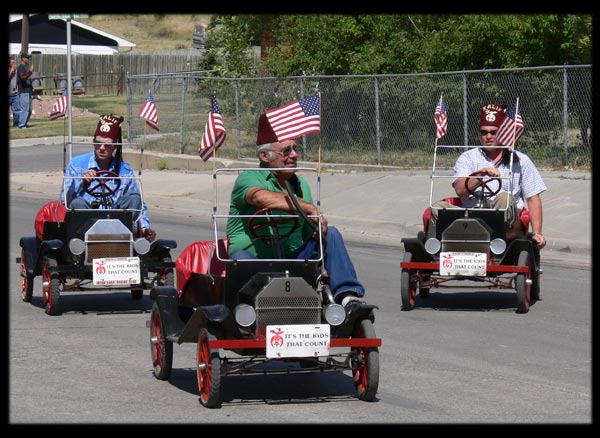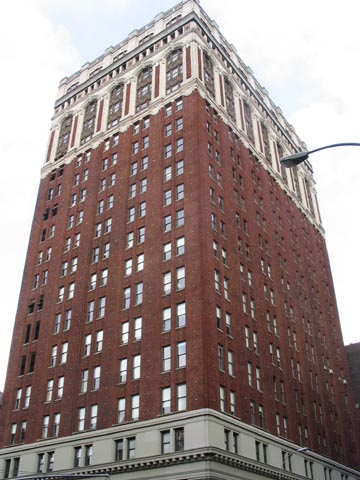
It was originally called the Mecca Temple, for the Ancient Order of the Nobles of the Mystic Shrine, a sect of the Masons. The Shriners, by the way, are the ones who ride around in those little cars in parades.

--Photo: Kate Klein
It was designed by Canadian architect, Harry P. Knowles, and completed in 1924. Knowles was a Mason himself, and known for his Masonic temples. Another building I wasn't aware was his is the Masonic Hall at 6th Avenue & 23rd Street, a building I've no doubt looked at a thousand times.

--Photo The Bridge and Tunnel Club
City Center does actually look very Moorish: the whole front facade is covered with the most incredible mosaic tile work:

The tile is evidently by Guastavino, who, by the way, also did the tiled arches in the anchorage of the Queensboro Bridge, once a food market and now home to a beautiful Conran Shop and Guastavino's Restaurant.

The whole interior seems to have some kind of mystical, spiritual significance, although I was trying to find some spooky symbolism in the ornamentation, and wasn't really able to find much, aside from a number of six, eight, and ten-pointed stars which I feel like should represent something creepy or another, but I don't know. For one thing, the geometry in the ornamentation, and the medallions containing these stars especially, is extremely complex.

--Photo nycitycenter.org
While 1924 is getting to be a bit late for Art Nouveau, and for the most part, its design could be classified more simply with the exotic, the proscenium arch reads "As Salaam Aleykam" which means "May Peace Be Unto You" in Arabic and is evidently a common greeting. The font style is a decidedly classic Art Nouveau style.

--Photo nycitycenter.org
The dome of the auditorium has the only graduated tile roof in the Northeast, which means the tiles get smaller as they approach the top of the dome. It's recently been renovated, also.
The building was actually going to be torn down in the early 1940s to be replaced by a parking garage but was saved by Mayor LaGuardia. In fact, he conducted the NY Philharmonic through the national anthem--with great showmanship, by the way, LaGuardia was a little nut--when it was reopened as a performing arts venue.
Both NYC Opera and NYC Ballet were born at City Center, and remained there until the completion of Philip Johnson's NY State Theater at Lincoln Center in 1964.

The Wikipedia entry is wrong, though. George Balanchine, founder of City Ballet, worked specifically with Johnson in both the arrangement of seats on the orchestra floor and also a sprung wood and Marley (vinyl) stage floor, ideal for ballet. There's no way the company wouldn't have moved right into their customized new home as soon as it was completed. It was NYC Opera who didn't move in until two years later.
Mecca Temple/ New York City Center (1924)
Harry P. Knowles
West 55th Street, between 6th & 7th Avenues
©2007, Ryan Witte
No comments:
Post a Comment